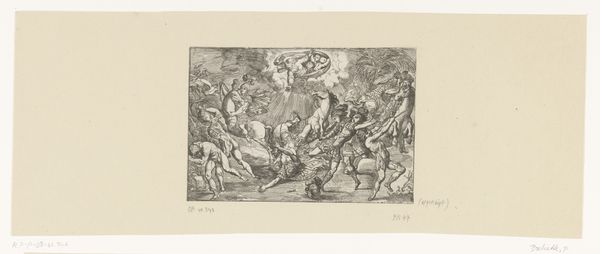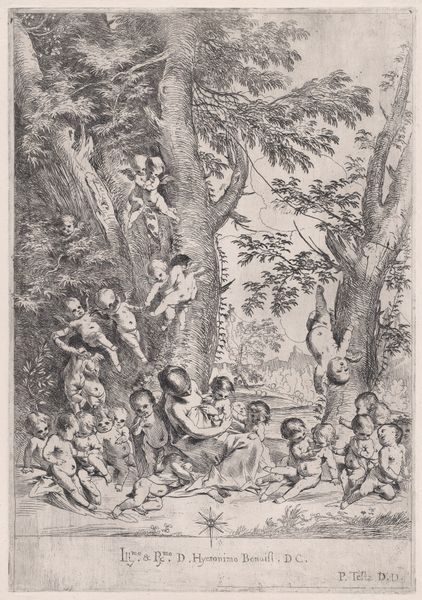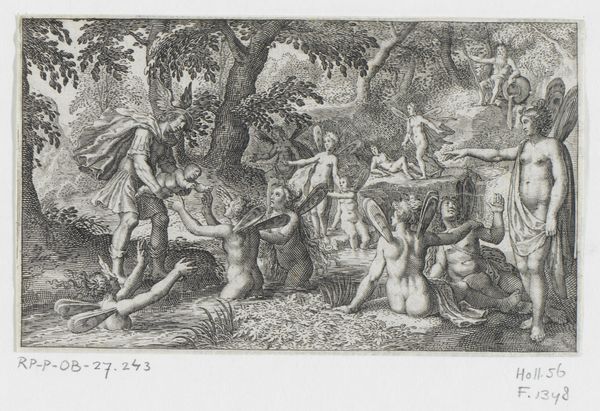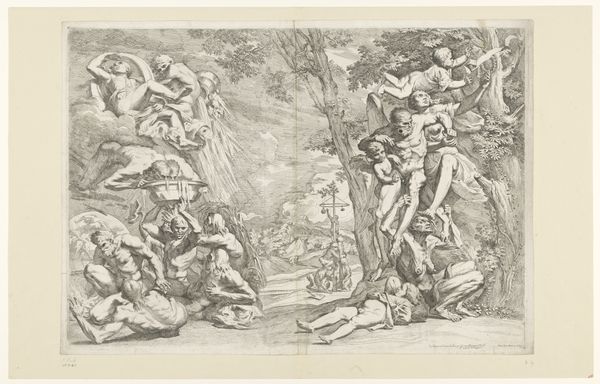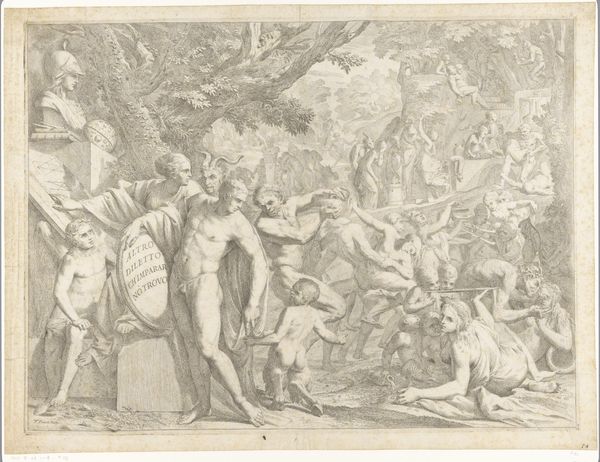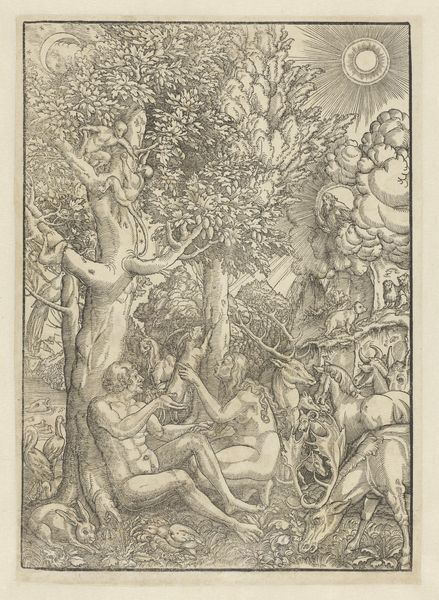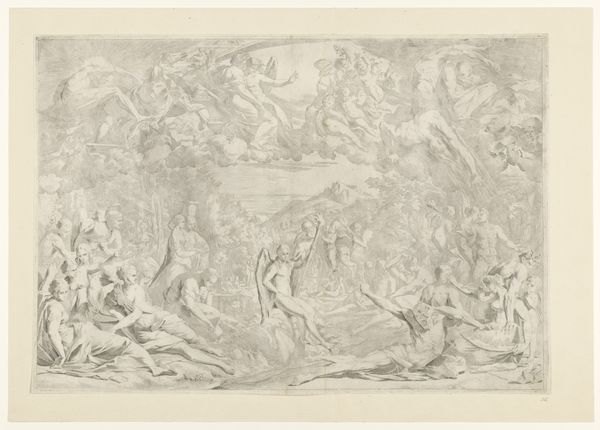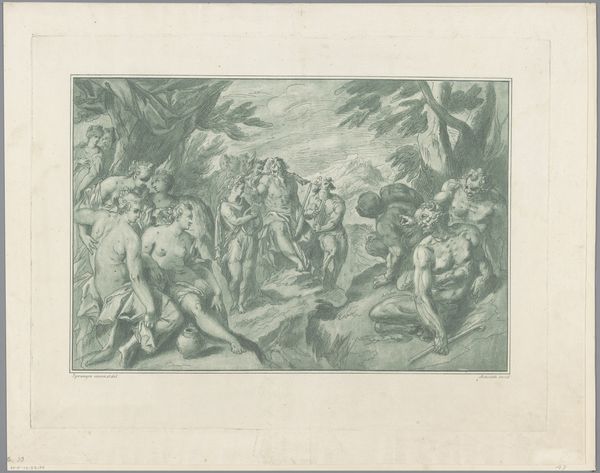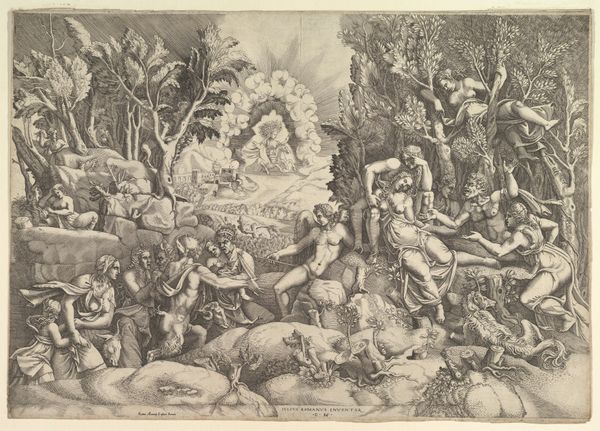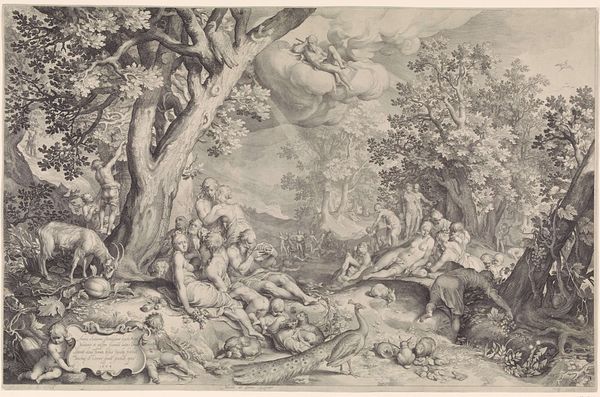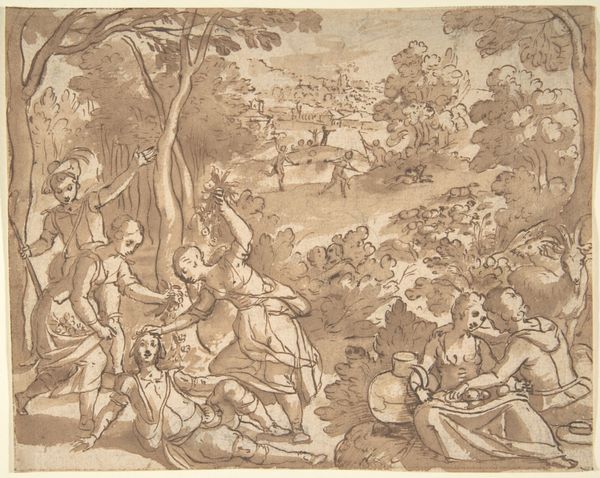
The Garden of Venus who reclines in the centre before a term of Pan and surrounded by cupids 1626 - 1642
0:00
0:00
drawing, print, etching, engraving
#
drawing
#
allegory
#
baroque
# print
#
etching
#
female-nude
#
cupid
#
genre-painting
#
engraving
#
male-nude
Dimensions: Image: 13 1/2 x 16 5/16 in. (34.3 x 41.5 cm) Sheet: 13 3/4 x 16 11/16 in. (35 x 42.4 cm)
Copyright: Public Domain
Editor: Pietro Testa's "The Garden of Venus who reclines in the centre before a term of Pan and surrounded by cupids", created sometime between 1626 and 1642, is an etching that depicts... well, a whole lot of cupids! It feels almost chaotic in its composition, like a Bacchanal of babies. What is your take on this piece? Curator: That's a great initial response. I think the "chaos" you perceive is part of its deliberate tension. Consider the era, though - the 17th century was steeped in socio-political upheaval. Images of leisure and pleasure, like this Garden of Venus, become loaded. They can be read as either a yearning for escape or a critique of societal excess. Look at the sheer number of cupids – could that be a commentary on uncontrolled desires, or maybe even anxieties around unchecked power, displaced onto allegorical figures? Editor: I hadn’t thought about the political undertones! I was just caught up in the... well, the abundance of cherubs! It's interesting to consider the "escape" angle, too. So, you're suggesting it's not just a pretty picture but a reflection of the anxieties of the time? Curator: Precisely! Art often holds a mirror to society, even when draped in mythology. Testa was deeply influenced by the intellectual circles in Rome. This piece might engage with debates around morality, earthly versus divine love, even class structures—think of Venus reclining while all these cherubs literally scramble for attention and space. Editor: That shifts my perception completely. It's less of a lighthearted frolic and more of a complicated statement about... everything! Thank you. Curator: Indeed! Examining the historical and cultural context encourages us to decode those silent dialogues within the artwork itself. It invites critical questioning about our own values. Editor: I am leaving with many different perspectives today. It is so helpful to delve into these diverse perspectives and decode a lot of complex topics.
Comments
No comments
Be the first to comment and join the conversation on the ultimate creative platform.
